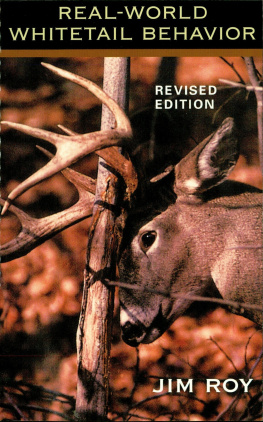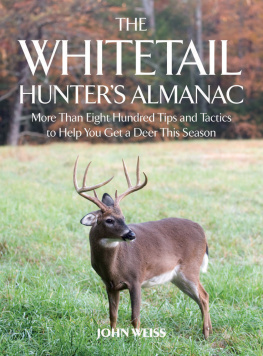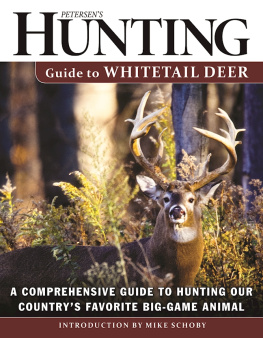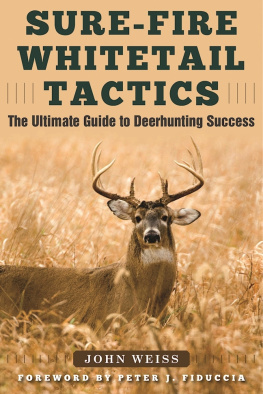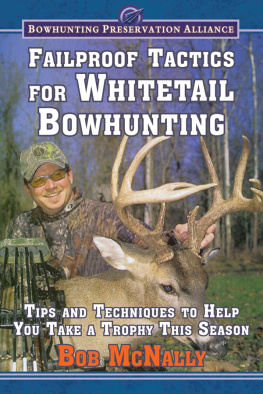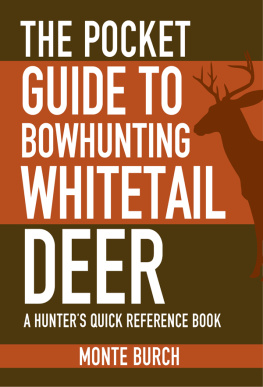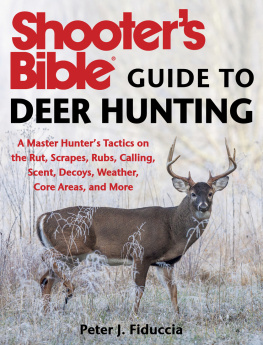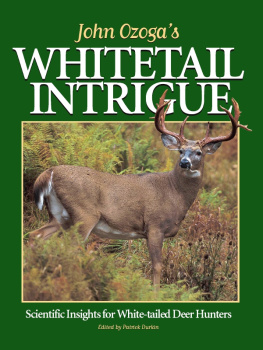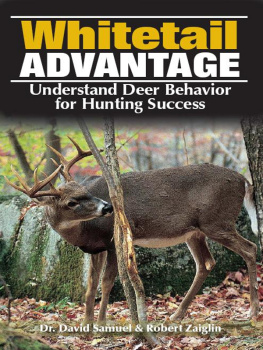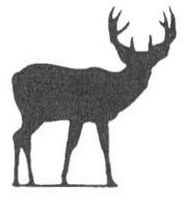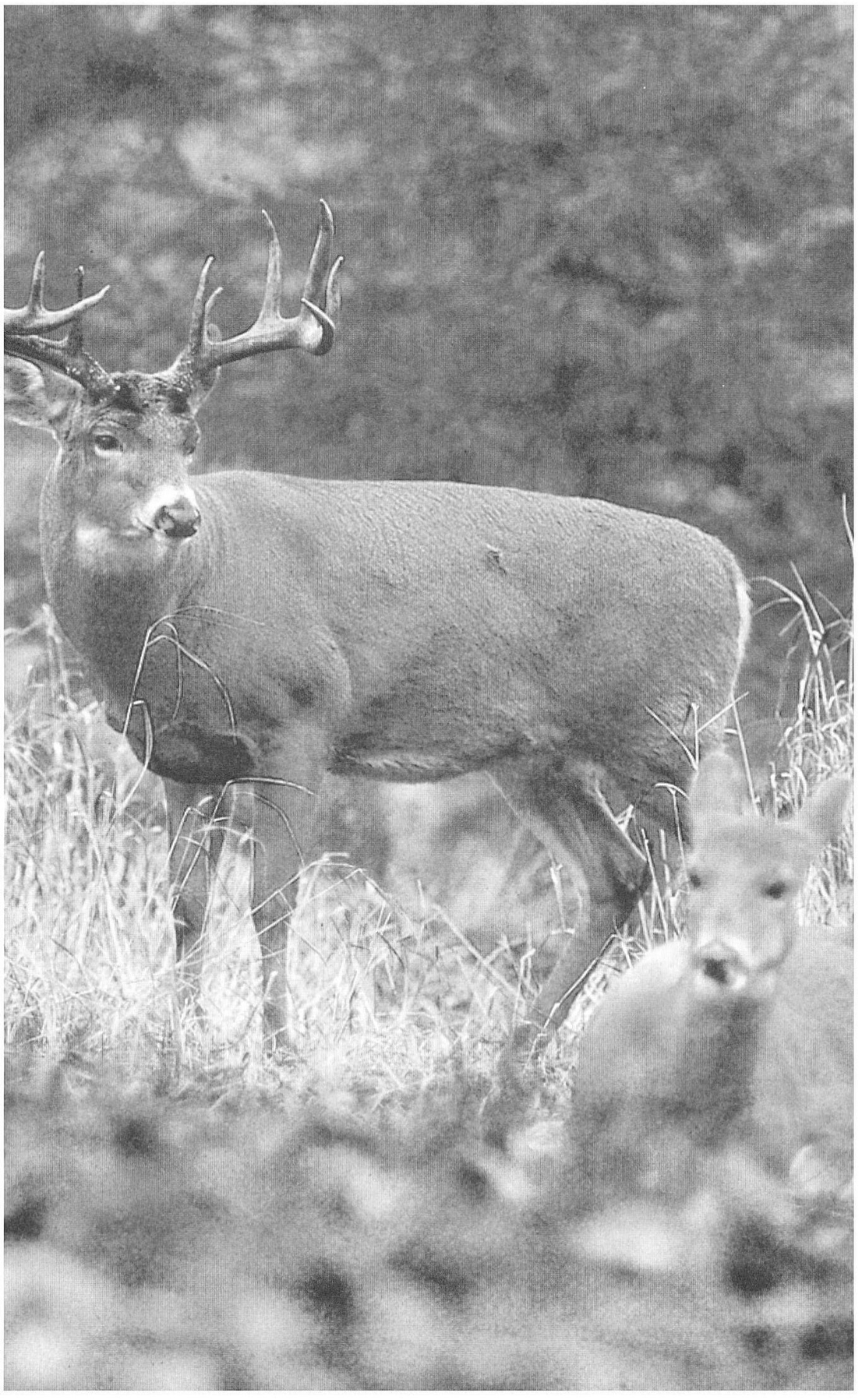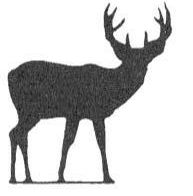I would like to thank my family and all my friends who helped make this book possible. Especially, Angela Haggins, Chief Librarian of the Smithsonian Environmental Research Center, a good friend who provided me with much assistance in locating and obtaining research materials for my studies; Dr. James Lynch, environmental research scientist and friend; Daniel Murphy, D.V.M.; and Mr. Y. Kirtpatrick-Howat of Contee Farms.
CHAPTER ONE
HERD DYNAMICS AND MOVEMENT
To kill a deer, you must know the ways of the deer! In this first section of the book, I will try to unravel, and explain, some of the mysteries and myths concerning the whitetail deer. I will be discussing deer, their normal behavior, and their normal movement patterns under natural conditions, by which I mean unpressured situations. No humans or dogs, etc., forcing the deer to move. So, sit back, relax, and let your mind learn and understand the life habits of the whitetail deer.
Deer are herd animals, and creatures of habit. Their survival is dependent on these facts. Knowing and understanding their habits as well as they do is the true secret to hunting them.
All deer live as members of some herd. The number of deer within any herd varies, but all deer herds consist of family groups, which are parental does with fawns, and individuals, which are lone bucks and single does of various ages. And, there could be many different, separate, small herds of deer living in any given area of land that is large enough to support them.
All deer, at birth, begin their lives in small, social units, called family groups, controlled by their mother, a doe. This parental doe teaches her fawns everything they need to know to live and survive as individuals and as herd members.
Fawns are born in late spring, a time of the year when the weather is mild, and the forage is plentiful. Two fawns of either sex is considered to be the normal litter size. However, a doe could birth from zero to four fawns, all depending on the availability of specific food sources in the area where they live. If a doe did not consume the right combinations of various and specific food sources while she was pregnant in early winter, the doe would either abort the embryos to save precious energy, or reabsorb the embryos to gain additional energy to survive the winter. If a doe consumed plenty of the right combinations of specific foods, she could give birth to four fawns. This is one of natures methods of controlling the population of deer in the wild, when there are not enough food sources in the area to support more deer.
Fawns remain with their parental doe throughout the summer, fall, and harsh winter, all the time learning and experiencing life as nature had planned. Fawns are physically rejected away from their family group by their parental doe, if she is pregnant, near the end of their first year of life. This usually occurs in mid-spring, just prior to the upcoming birthing season. Parental does that did not mate, or became pregnant during the previous mating season or rut, will usually keep their now one-year-old fawns, called yearlings, with them for companionship and safety throughout the summer and early fall, until the rut begins to occur again. Then the yearlings, now a year and a half old, are driven away from the family group and their parental doe by the very aggressive, much larger, breeding bucks of the herd when they look for and single out the does of the herd for mating. Either way, the fawns are now yearlings. They have experienced the worst of all the seasons of the year, and now they must live and survive as individuals within the herd.
Whitetail deer are very territorial, as individuals and as a herd. Their survival is dependent on how well they know the territory or land they live on. Most deer will generally travel and spend their entire lives in, a small well-defined area of land, called a home range area. The actual shape and size of an individual deers home range area vary greatly, depending on the terrain, the locations of food and water, and cover. Deer, or any other animal in nature, will not spend any more energy than absolutely necessary to obtain food, water, and cover. Therefore, an individual deers home range area is simply defined to be the minimum amount of traveling distance on an area of land that contains enough food, water, and cover to survive. In most cases, at least in the East, it is generally considered to be less than one square mile in area, per each prevailing wind direction. One individual deers home range area could be two hundred yards wide by three miles long, while another deers home range is a quarter-mile wide by two miles long, per each prevailing wind direction.
Fawns share their mothers home range area during the first year of their life. Then after being rejected from their family group, they each establish their own home range area, branching off from and overlapping their mothers home range area. This is how nature directs young deer to remain in their parental does herd, by keeping them near their mothers scent in the herds home range territory.
The total area of land encompassing all the home range areas of all the family groups and individual deer of the entire herd is called the herds home range territory. Just how large a section of land a herds home range territory covers depends on the season of the year, the terrain, and the number of deer in the herd. Within any deer herds home range territory, the individual deer and family groups belonging to that herd share and have overlapping home range areas with other members of that herd. This is the basis to the deer herds defense system. If any one deer of the herd is disturbed while it beds, feeds, or travels anywhere within its home range area or the herds home range territory, its reactions alert the rest of the herd.
A deer herds home range territory in mountainous regions is generally much larger than that of a deer herd located in flat, farmland areas. This is for the simple reason that deer living in mountainous regions usually have to travel much greater distances to locate the seasonal food varieties, water, bedding, and cover areas.
Deer live as herd animals, and they bed as herd animals. The most dominant deer of the herd, usually the larger bucks, take the best bedding sites, and the rest of the herd bed out away and around them at various distances and locations.
The age, physical size, and aggressiveness of each individual deer establishes its dominance ranking or pecking order position within the herd, or among other deer. Yearlings begin their lives as individual deer at the bottom of the dominance ladder. The older, larger individual deer of the herd control where, and just how close in distance the younger individual deer bed, feed, and travel near them. It is strictly a function of one deers tolerance of another deers presence, and it varies greatly at different times of a year. A large, mature, herd buck may not allow another individual deer or a family group to bed within 100 yards of him. A family group controlled by a very large, older parental doe may not allow any other family groups or individual deer of the same herd to bed within forty yards of her. Whitetail deer are considered to be mature animals at three and a half years of age.

